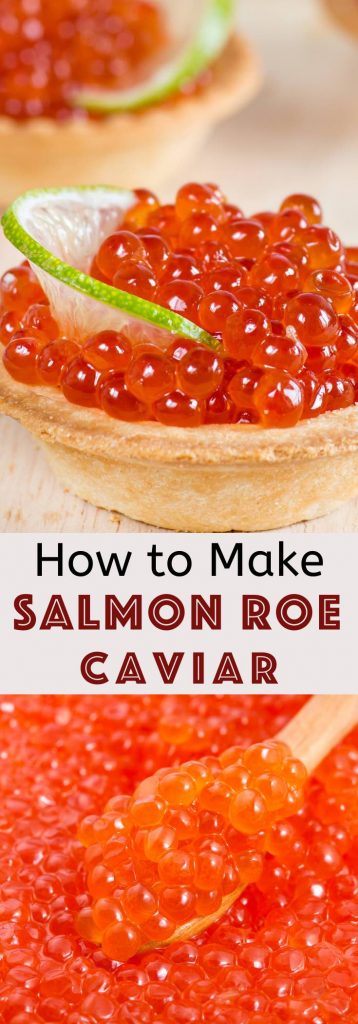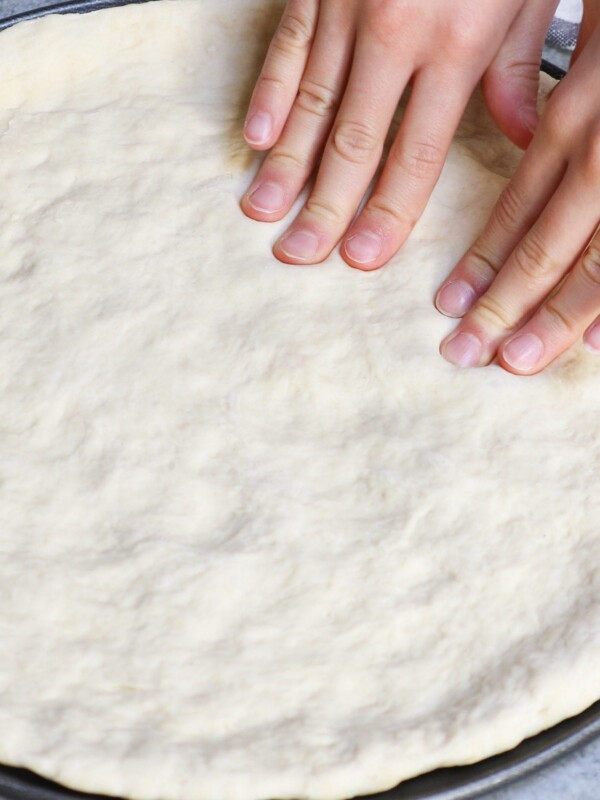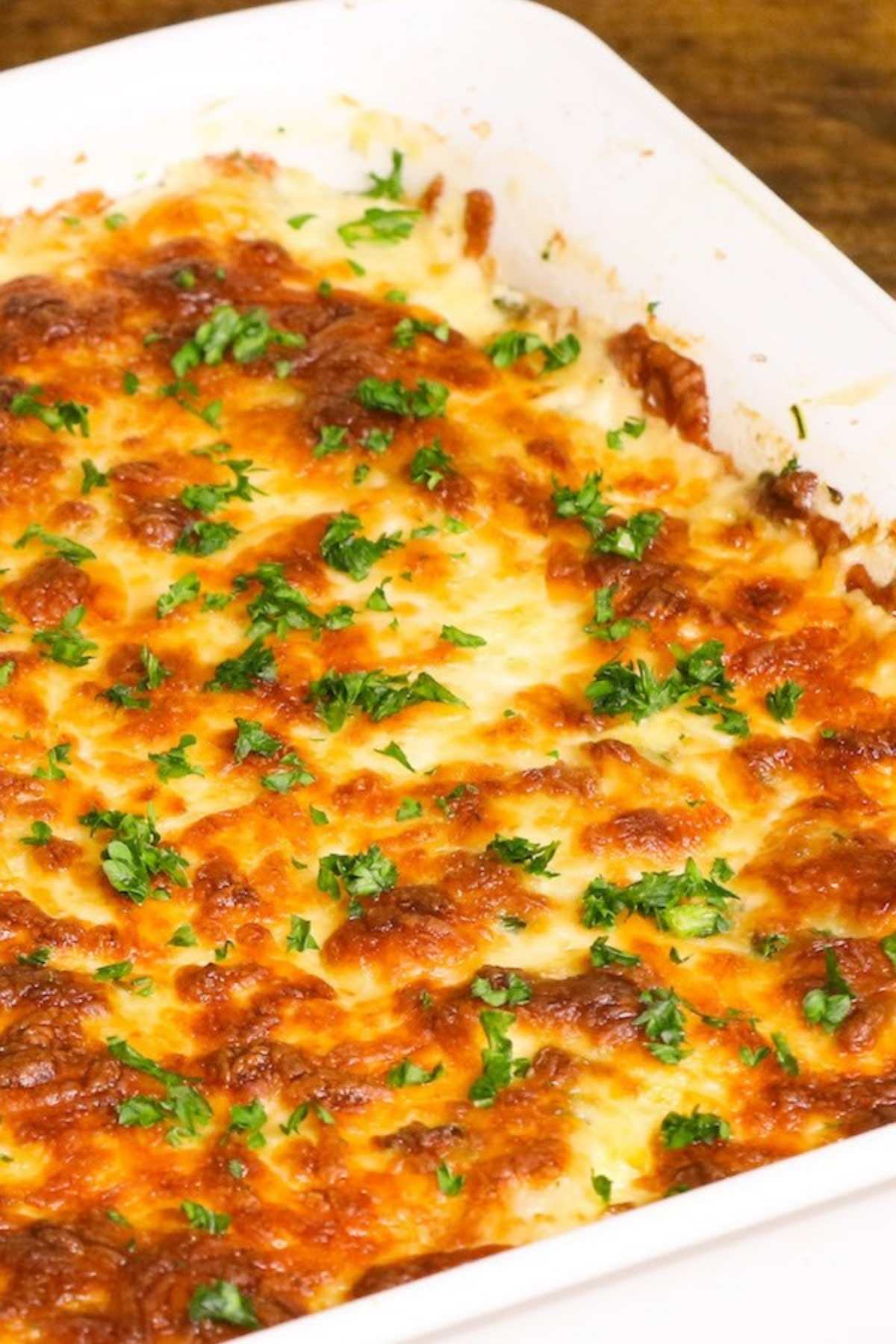Salmon Roe Caviar (Ikura)
on Apr 17, 2020
This post may contain affiliate links. Please read my disclosure policy.
Learn how to turn salmon roe to the delicious caviar at home with just a few ingredients. I’ll share with you the tips on making this delicacy from raw fish eggs or salmon eggs. You’ll find everything you need about salmon caviar/ikura and how to use it in recipes.
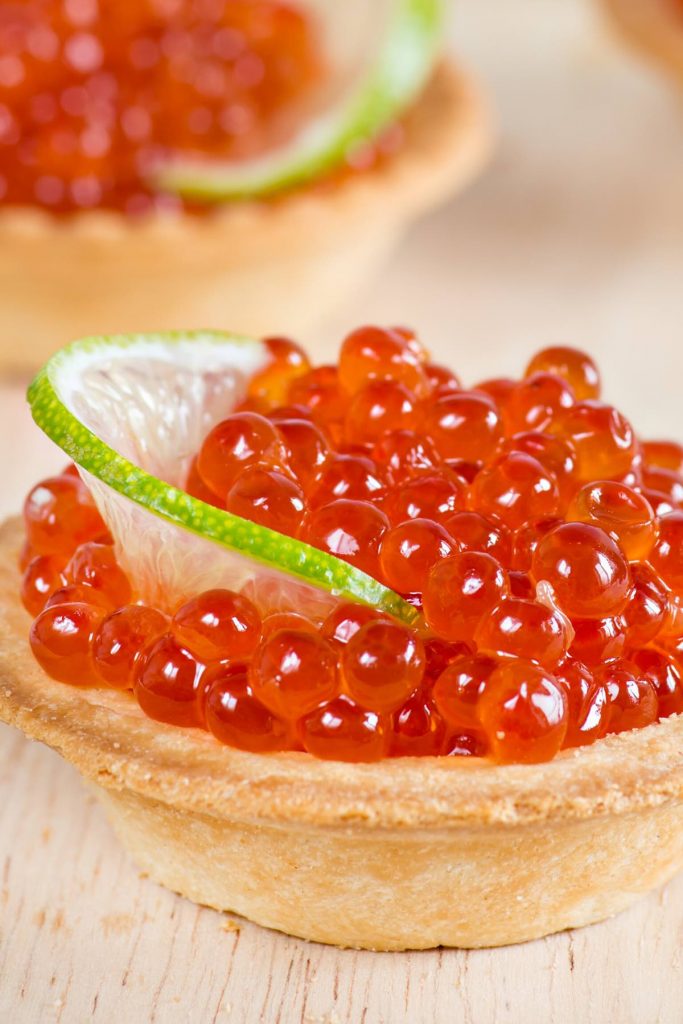
What are salmon roe or salmon fish eggs?
Salmon fish eggs are also called salmon roe, which is the reddish-orange eggs found inside the bellies of female salmon. There is a sack called skein that holds the fish eggs together inside the fish. The eggs will develop and hatch into baby fish if the fish was never caught.
Usually imported from Russia and Alaska, salmon eggs vary in size, saltiness and explosiveness.
What is caviar?
Caviar is the salt-cured eggs from sturgeon fish, and there are a variety of different kinds of caviar, which come from different fish. Caviar is usually defined specifically as sturgeon roe.
Salmon caviar is the cured salmon roe product, and it’s also called ikura or red caviar. In Japanese cuisine, salmon caviar is further distinguished among chum salmon (the most expensive), sockeye and king salmon. They vary in size, but generally are much larger than tobiko eggs.
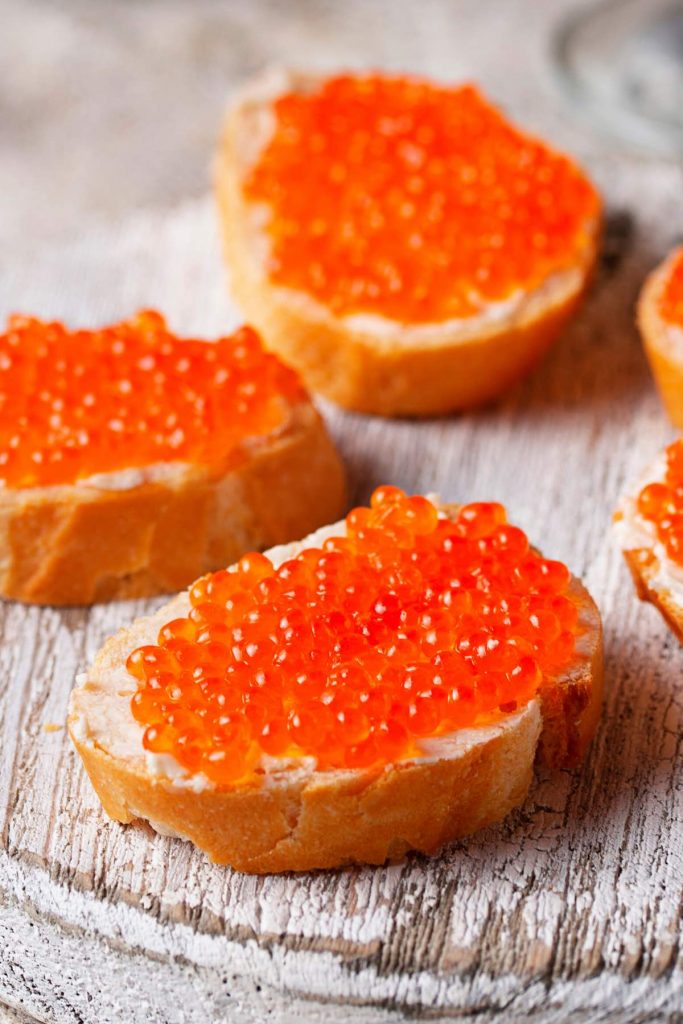
What does caviar taste like?
It has a salty and fishy taste with a slightly gritty texture, and complements rice and fish very well. Salmon caviar has a mild fish flavor with a “crunch” or “pop” when eaten.
Is salmon roe caviar good for you?
Red Salmon caviar is commonly known as a top-notch seafood dainty and very good for your health. It’s a good source of lean proteins, omega-3 fatty acids, vitamins and minerals. It helps to promote a healthy nervous, circulatory and immune system.
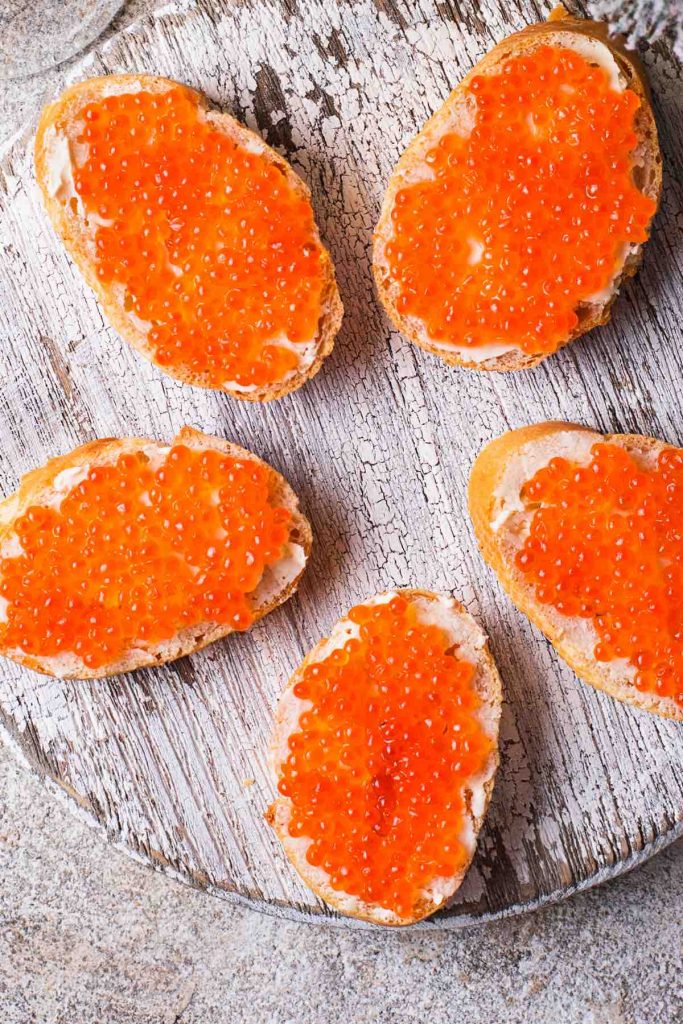
Types of caviar
There are many types of caviar and the biggest differences are the size and pigment of the caviar. As caviar is made of roe from wild sturgeon, main types include Belugar, Kaluga hybrid, Sevruga, Baika, and American Osetra. Other caviar includes salmon, and whitefish caviar etc.
It comes in a variety of colors, including red, orange, black, gray and brown, based on the species of fish and any additives.
Where to buy salmon roe?
When you buy fresh salmon, sometimes it comes with the skeins with fish eggs inside. But you can also buy salmon eggs separately at the fish market.
Caviar can be found at most Japanese grocery stores, or you can order them online from amazon.
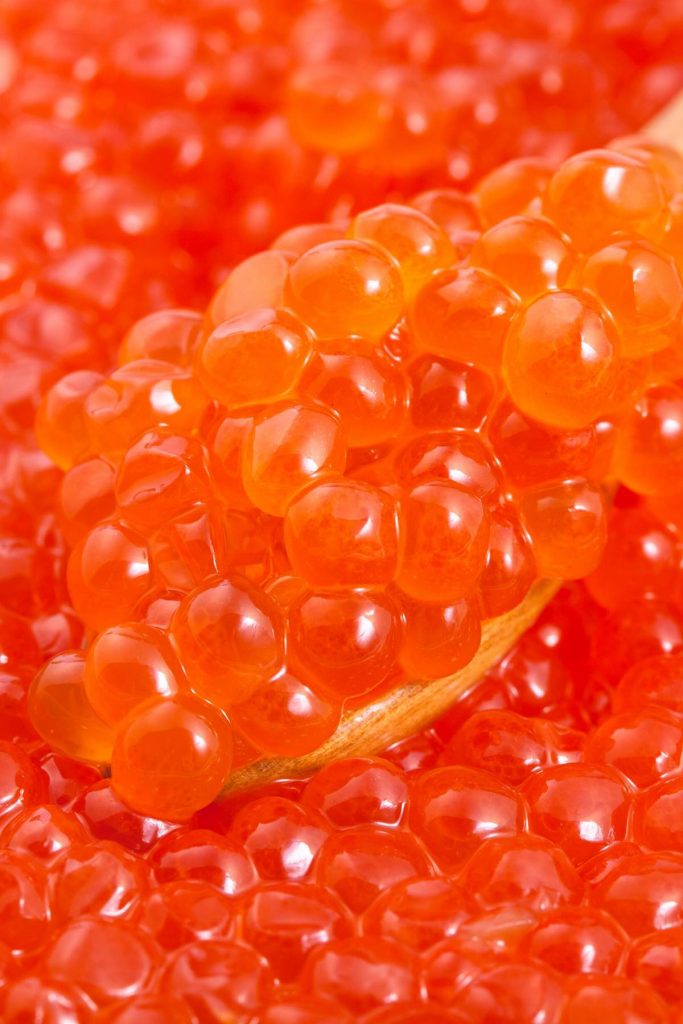
How to store caviar?
As salmon caviar deteriorates relatively rapidly due to oxidation of fats, it can be stored in fridge for only 2 weeks and in the freezer for up to 2 months.
How to make salmon caviar
Homemade salmon caviar calls for a few ingredients and is incredibly delicious:
- Remove salmon eggs from the skein: Place the skein on a work surface and hold the skein firmly. Then use a spoon to scrape along the top of the skein to remove the eggs from the skein. Repeat a couple of times until all the eggs are removed.
- Rinse the eggs: Place the eggs into a sieve and lower then into a glass bowl. Rinse with cold water and make sure to rinse off any pieces of skein membrane and blood. Then remove the eggs to a clean dry bowl.
- Make the brine: In a seperate large glass bowl, add water and salt. Stir until the salt is completely dissolved.
- Make the caviar: Pour the brine over the eggs and soak them for 5 minutes. Strain out the water and place the eggs in a glass jar.
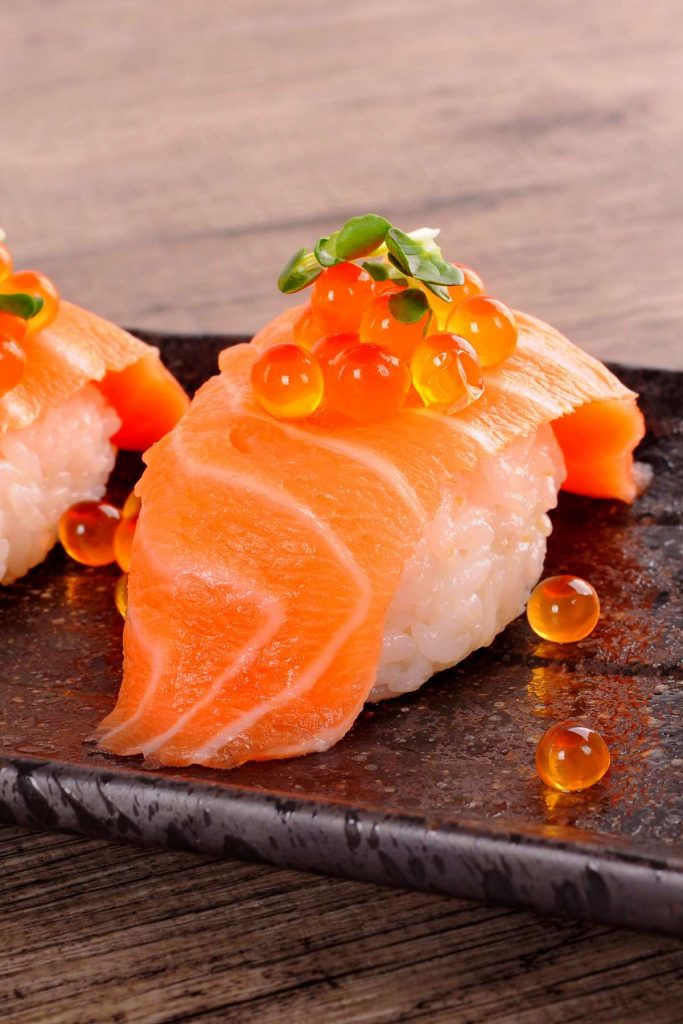
Some tips:
- Avoid using metal utensils when making or handling caviar, as they oxidize the eggs.
- I recommend rinsing the roe gently with cold running water. You’ll need to rinse a couple of times until the water comes out clear.
- It’s best to use filtered water for the brine to avoid the chemicals that can affect the flavor of your caviar.
- To make your caviar shiny, you can mix it with some oil.
Why is caviar so expensive?
Caviar comes from eggs of the sturgeon, but there are only 27 varieties of sturgeon, 18 of which are on a list of threatened species. The scarcity of mature sturgeon fish makes caviar very valuable.
In addition, to turn these fish eggs into caviar, they must be harvest by hand, a process incurring extra labor costs.
Ways to serve ikura salmon caviar:
- Serve it with buttered toast
- Top steamed rice with caviar and shredded nori
- Use it as garnish for sushi rolls, sashimi, etc.
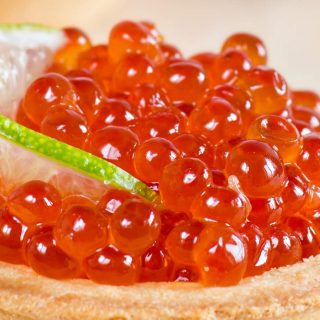
Salmon Roe Caviar (Ikura)
Ingredients
- 1 skein caviar
- 1/2 cup salt
- 3 cups filtered water
Instructions
- Place the skein on a work surface and use one hand to hold the skein firmly.
- Then use a spoon with the other hand to scrape along the top of the skein to remove the eggs from the skein. Repeat a couple of times until all the eggs are removed.
- Place the eggs onto a sieve and lower then into a glass bowl.
- Rinse with cold running water and make sure to rinse off any pieces of skein membrane and blood. Then remove the eggs to a clean dry bowl.
- In a large glass bowl, add water and salt. Stir until the salt is completely dissolved.
- Pour the brine over the eggs and soak them for 5 minutes.
- Strain out the water and place the eggs in a glass jar.
Notes
- You will get about 1/2 pound of cured salmon caviar from every pound of salmon skein.
- If your salmon caviar is too salty, you can rinse with water to reduce the salt level.
Nutrition information provided is an estimate only and will vary based on ingredient brands and cooking methods used.
